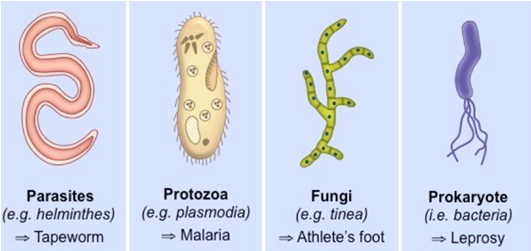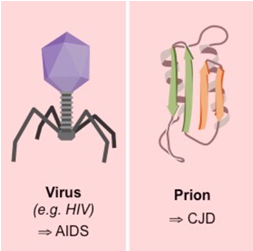Infectious and Non-Infectious Disease Notes
Body Coordination
What is Disease?
Definition: A disease disrupts the normal physiology (functioning) of the body.
Effects: Leads to a deterioration in health (illness).
Types: Diseases are classified into two categories:
Non-transmissible: Cannot be spread from person to person.
Transmissible: Can be transmitted between organisms.
Non-Transmissible Disease
Characteristics:
Cannot be spread from one person to another (non-contagious).
Causes:
Nutritional deficiencies
Unbalanced diets
Genetic inheritance
Examples: Thinking broadly about conditions like diabetes, heart disease, etc.
Transmissible Disease
Definition: Contagious diseases transmitted from one organism to another.
Causation: Caused by pathogens, which are disease-causing agents.
Pathogens: Disrupt normal body functions and homeostasis, resulting in disease.
Classification of Pathogens: Includes various categories based on characteristics.
Classifying Pathogens
Cellular or Non-Cellular:
Cellular: Composed of cells that can reproduce on their own (may require a host).
Non-Cellular: Not composed of cells and require a host for reproduction.
Cellular Pathogens: Further differentiated into:
Prokaryotic:
Lack membrane-bound organelles.
Eukaryotic:
Possess membrane-bound organelles (e.g., nucleus).
Comparison of Viral and Bacterial Infections
Aspect | Viral Infection | Bacterial Infection |
|---|---|---|
What is it? | Systemic (spreads throughout body) | Localized (stays in one area) |
Cellular/Non-cellular | Non-cellular | Cellular |
Contagious? | Yes | Sometimes |
Treatment with antibiotics? | No | Yes |
Examples | Common colds, flu, chickenpox | Strep throat, pneumonia, UTIs |
Body's Defence Mechanisms
Immune System: Body’s protection against disease-causing organisms, malfunctioning cells, and foreign particles.
Three Lines of Defence:
First Line (Non-Specific):
Prevents pathogen entry through:
Tears: Contain antibacterial enzymes.
Saliva: Contains antibacterial enzymes.
Mucus & Cilia: Trap foreign particles.
Intact Skin: Acts as a protective shield.
Stomach Acid: Breaks down harmful invaders.
Second Line (Non-Specific):
Prevents the spread of pathogens via:
White Blood Cells: Recognize and engulf foreign particles. Phagocyte recognise foreign substances and gobble them up
Fever: Raises body temperature as a response to infection.
Inflammation: Swelling and increased blood flow at infection sites.
Third Line (Specific):
Targets specific pathogens:
Lymphocytes: Identify foreign objects and can remember infections for quicker responses upon re-exposure.
Antibodies: Produced by B cells, these proteins neutralize pathogens and mark them for destruction by other immune cells.
Cytotoxic T cells (also called killer T cells) are living cells.
They hunt down and kill your own body’s cells that are infected with viruses or that have become cancerous. They attack cells directly.Antibodies are proteins, not living cells.
They float around in your blood and stick to viruses, bacteria, or toxins to block them or make them easier for other immune cells to clean up. Antibodies don't kill anything directly — they just "mark" or "neutralize" invaders. Each antibody binds to one specific binding site known as the antigen.
All contagious diseases are infectious.
If you can catch a disease from someone, it means their germs are being passed to you, making it infectious.
Not all infectious diseases are contagious.
For example, food poisoning is an infectious disease (caused by bacteria in food) but is not contagious because you can't get it from someone just by touching them. Similarly, tetanus is an infectious disease but not contagious because it's not spread from person to person.


|
|